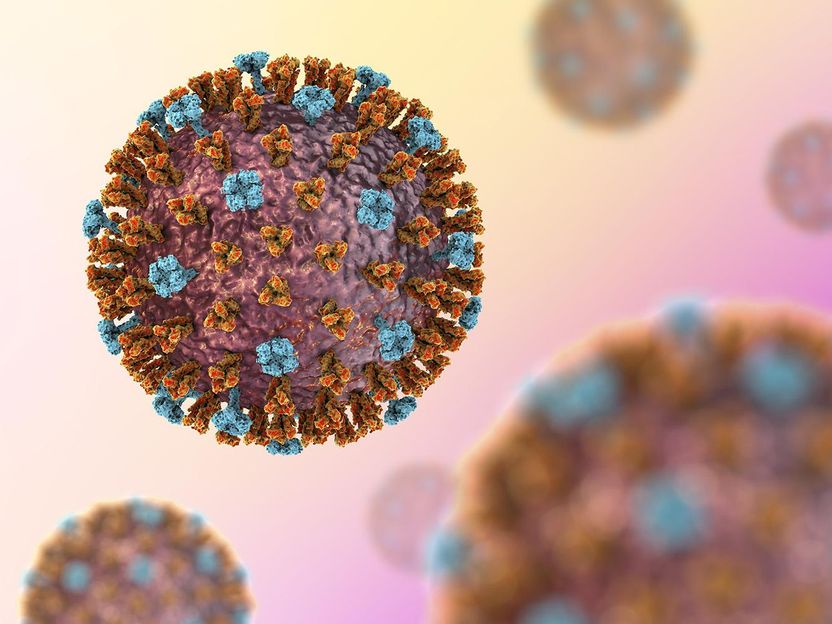Thwarting cellular enzyme can fight viral infections
The findings could help to develop drugs that combat viruses such as influenza A and Zika
FMI researchers have identified a synthetic protein that dampens the activity of a cellular pathway involved in viral infection. The findings could help to develop drugs that combat viruses such as influenza A and zika.

Hindering a specific cellular pathway may help to fight viruses such as influenza A (pictured, artist’s impression).
Kateryna Kon/Shutterstock
Influenza A virus affects millions of people worldwide and can have serious complications, including bacterial pneumonia, ear infections and the worsening of long-term medical conditions.
Once the flu virus enters a cell in the body, it has to release its genetic material, which is packed into a protein shell called capsid. To do so, the virus hijacks some of the molecular machinery of the cell: loosely attached to the virus are chains of a protein called ubiquitin, which interacts with a cellular enzyme known as HDAC6; at the same time, HDAC6 binds to components of the cell’s skeleton and to motor proteins, pulling the capsid into pieces so that it can be degraded by the cell’s waste disposal machinery. Opening up the capsid releases the genetic material of the virus inside the cell, facilitating viral infection.
To test whether interfering with HDAC6’s interaction with ubiquitin could hinder flu infection, Longlong Wang and his colleagues in the Matthias group screened DARPins, a class of synthetic proteins that can bind to a variety of targets. The researchers found one DARPin that was able to latch onto HDAC6 and prevent it from binding to ubiquitin, in both test tubes and cells grown in a dish. Cells expressing this DARPin showed reduced levels of infection not only with influenza A but also with Zika virus. Zika virus, which is spread through mosquito bites, causes a disease that in pregnant women can lead to stillbirth or birth defects such as smaller-than-average head and brain.
The findings, published in Cell Reports on April 26, suggest that HDAC6’s binding to ubiquitin is an attractive target for drug discovery, and preventing this binding could help fight infections with viruses such as influenza A and Zika.
Viruses rapidly accumulate mutations, which could confer resistance to antiviral drugs, says senior study author Patrick Matthias. For this reason, he adds, scientists are interested in targeting cellular pathways like the one his team has targeted. “We have very few drugs against viruses, so there is room for progress in the future.”
Original publication
Most read news
Original publication
Wang L, Aguiar Moreira E, Kempf G, Miyake Y, Oliveira Esteves BI, Fahmi A, Schaefer JV, Dreier B, Yamauchi Y, Alves MP, Plückthun A, Matthias P. Disrupting the HDAC6-ubiquitin interaction impairs infection by influenza and Zika virus and cellular stress pathways. Cell Rep 39, 4: 110736 (2022)
Topics
Organizations
Other news from the department science

Get the life science industry in your inbox
By submitting this form you agree that LUMITOS AG will send you the newsletter(s) selected above by email. Your data will not be passed on to third parties. Your data will be stored and processed in accordance with our data protection regulations. LUMITOS may contact you by email for the purpose of advertising or market and opinion surveys. You can revoke your consent at any time without giving reasons to LUMITOS AG, Ernst-Augustin-Str. 2, 12489 Berlin, Germany or by e-mail at revoke@lumitos.com with effect for the future. In addition, each email contains a link to unsubscribe from the corresponding newsletter.





















































